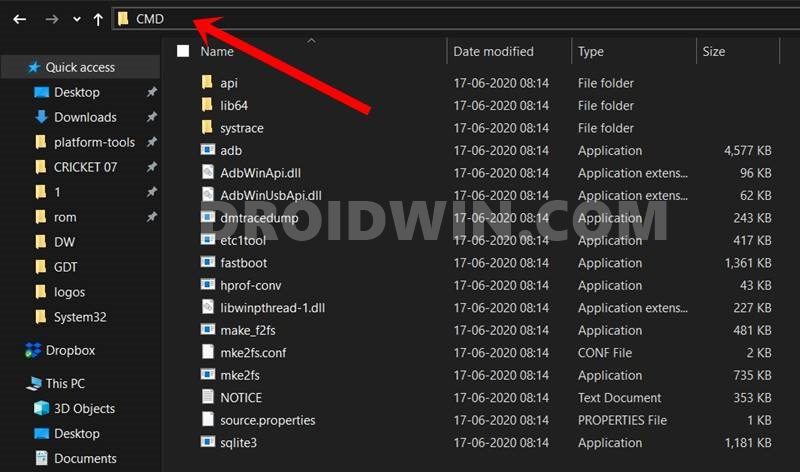However, in spite of the tons of availability, it is the one from Google that has managed to create a rich fanbase for itself. The default launcher for the Pixel devices created quite a buzz with the Pixel 1 and the hype is yet to settle down. Many users have already switched from their default OEM launcher to this offering from the Silicon Valley giants. However, this adoption hasn’t been without its fair share of issues. There have been a few instances wherein this launcher doesn’t seem to work along the expected lines (quite recently on OnePlus running OxyegnOS 12/ColorOS 12). If you are also getting bugged with this issue, then this guide shall help you out. In this tutorial, we will show you various methods to fix the Pixel Launcher not working on your Android device. So without any further ado, let’s get started.
How to Fix Pixel Launcher Not Working on Android
If you are using a Pixel device, then the Pixel Launcher might be the only one installed on your device. If that is the case, then, for the time being, we would suggest you install an additional launcher as well (such as Nova or any other of your choice). This is because when we would disable or force stop the Pixel Launcher, then your device will have an option to fall back to the second launcher. So you may refer to the below instructions to change the default launcher, as and when the need arises.
FIX 1: Force Stop App
First and foremost, you should force stop and then manually restart the app. Doing so will refresh all its underlying processes and it will give it a fresh instance to work upon. And this in turn might rectify the underlying issue as well. So refer to the below steps to try it out:
FIX 2: Delete App Cache
Next up, consider deleting the app’s temporary data as well. If a lot of these cache files get accumulated over the due course of time, then it might conflict with the app’s proper functioning and could also slow down its usability. Therefore, let’s put these files in the bin right away and then check out the results.
FIX 4: Remove Battery Restrictions
If you have put any battery restrictive measures in place, then the games and apps might have a tough time working in this restrictive environment. Therefore, you should consider removing all these roadblocks and then check out the results. Here’s how it could be done:
FIX 5: Toggle Default Launcher
Next up, you should consider temporarily switching over to another launcher for the time being before switching back to the Pixel Launcher. Toggling this functionality will refresh the home launcher settings which in turn could rectify the underlying issue as well. So let’s put this fix to the test and check out the results [make sure you have a temporary secondary launcher installed as well].
FIX 6: Disable and Re-Enable App [Via Settings and ADB]
Disabling and then re-enabling the app will refresh its underlying settings and would start off with a new instance. And this in turn might end up rectifying the underlying issue as well. So let’s put it to the test and check out the results. Non-Pixel devices might easily do so from the Settings menu itself, whereas Pixel devices need to take the help of ADB Commands. Follow along for the instructions:
For Non-Pixel Devices
For Pixel Devices
For a detailed explanation, check out our guide on Disable/Uninstall Apps from Android via ADB. The shorter instructions are given below:
FIX 6: Delete App Data
If the app’s data gets corrupted, then its negative consequences will be felt across the app as a whole. In such cases, you have no choice but to delete that app’s data and then let it repopulate the same from scratch. Here’s how it could be done:
FIX 7: Reinstall App [Via Settings and ADB]
If the app’s configuration and settings file get corrupted, then simply deleting the app’s data and cache might not be enough. In such cases, you will have to uninstall the app from your device and reinstall its fresh build. However, if you have a Pixel device, then you wouldn’t be able to uninstall it the normal way and you would instead have to take the help of the ADB Commands. Whereas non-Pixel devices could easily take the normal approach via the Settings menu. All this has been explained below, follow along.
For Non-Pixel Devices
For Pixel Devices
For a detailed explanation, check out our guide on Remove/Uninstall Apps from Android via ADB. The shorter instructions are given below:
FIX 8: Downgrade App to Earlier Version
In some instances, the developer might roll out a buggy update, which could end up breaking the app’s entire functionality. Though they are usually quick to release a subsequent patch, but that rollout could still take around 3-4 days to arrive. And this is quite a long time frame. So it’s better to downgrade the app to the earlier table version and remain on that build until the issue has been resolved. Here’s how it could be done: With this, we round off the guide on how you could fix the Pixel Launcher not working issue on your Android device. We have listed eight different methods for the same. Do let us know which one spells out success for you. Likewise, all your queries are welcomed in the comments section below.
Recent Apps button not working with Custom Launchers [Fixed]How to Root Android 13 via Magisk Patched BootHow to Downgrade Android 13 to Android 12 [2 Methods]Android 13: What’s New, Download, Install, Downgrade, and Root
About Chief Editor
![]()
![]()
![]()
![]()
![]()

![]()

![]()
![]()
![]()
![]()
![]()

![]()

![]()
![]()
![]()
![]()
![]()